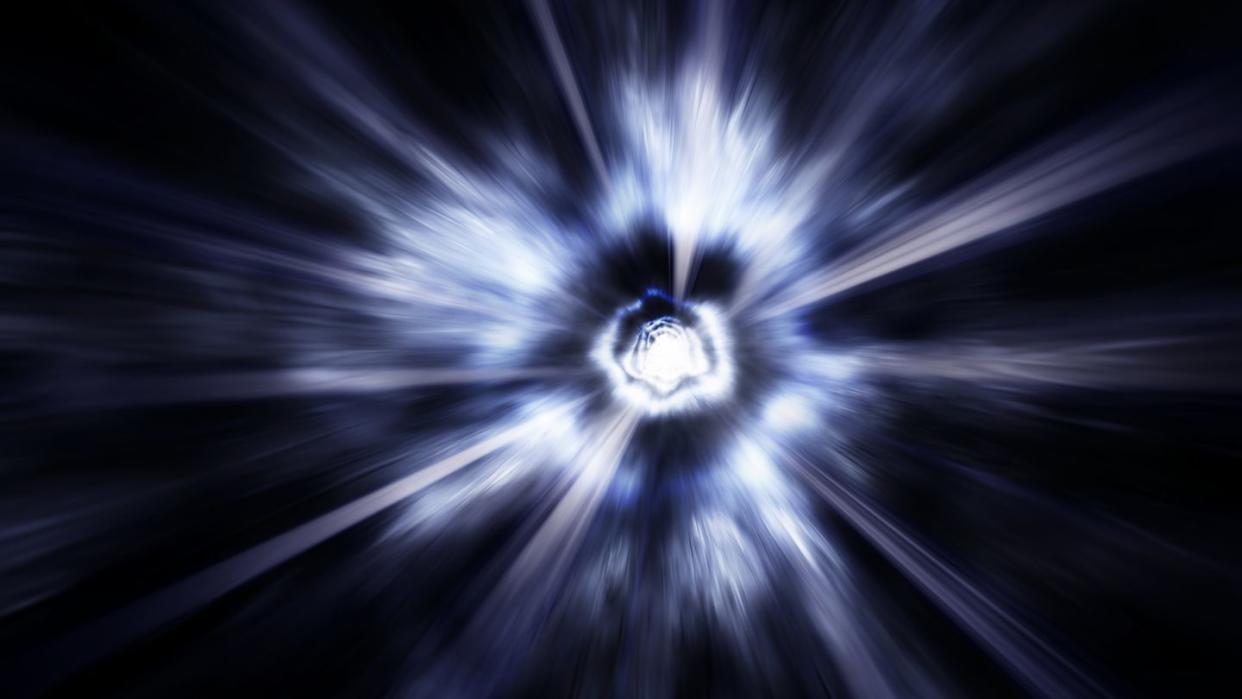A Study Says Warp Drives Might Be Real—and We'll Find Them With Lasers

If humanity ever wants to escape the solar system, we’re going to need a faster-than-light engine. Enter: the warp drive.
While such a drive pushes the limits of known physics, a new study ponders whether we could detect gravitational waves produced from collapsing warp drives using laser-based detectors, such as LIGO or even the upcoming LISA.
While purely speculation, this study doesn’t continue the conversation about whether gravitational waves could be another tool for our never-ending search for intelligent life beyond Earth.
There’s always an enormous elephant in the room when talking about the far future of human space travel. Colonizing other planets is relatively doable with known physics, but if humans have any hope of spreading our wings beyond the solar system, space travel gets pretty daunting, pretty quickly. Even traveling at the speed of light—which we can’t yet do—means that a trip to Proxima Centauri, the closest star to our Sun, would still take more than four years.
Because of this seemingly insurmountable obstacle, some scientists have relied on exotic ideas like warp drives to cover these fast distances. Instead of going from point A to point B in a straight line, warp drives would bend spacetime itself so that star trekking (see what we did there?) doesn’t take whole lifetimes.
While warp drives are a great sci-fi narrative tool, the real-world physics are a bit more complicated. Most of these drives rely on exotic ideas like negative energy or superluminal matter, and while non-profits like Applied Physics are putting up money for research into warp drives based in real physics, these engines remain unattainable—at least to us humans.
A new study published on the preprint server arXiv ponders whether it might be possible to detect the presence of warp engines at work among advanced alien civilizations. Scientists from the U.K. and Germany theorized that a warp drive that experiences a containment failure would produce a gravitational wave, otherwise known as a ripple in spacetime.
The paper reads:
“In this work, we study the signatures arising from a warp drive ‘containment failure’, assuming a stiff equation of state for the fluid. Our work highlights the importance of exploring strange new spacetimes, to (boldly) simulate what no one has seen before.”
First detected by the Laser Interferometer Gravitational-Wave Observatory (LIGO) in 2015, these ripples are usually associated with gigantically violent space phenomenon, such as black hole mergers, supernovae explosions, and neutron star collisions. However, scientists have recently considered whether LIGO, or its space-based big brother, the Laser Interferometer Space Antenna (LISA), could potentially pick up on artificial sources of gravitational waves—a.k.a. alien tech.
In late 2022, a paper published on the arXiv server analyzed gravitational waves as a means for searching for intelligent life, stating that LIGO “also provides the potential to detect extraterrestrial mega-technology.”
The idea of a warp drive is particularly appealing because it’s technically describable within general relativity, as the Mexican theoretical physicist Miguel Alcubierre proposed back in 1994. (These theoretical drives are also sometimes called “Alcubierre drives.”) This new paper tries to piece together what these grav-wave signatures would look like if some advanced lifeform were able to crack the warp drive conundrum. But just because we know what the signatures might look like, actually finding them is a whole other problem.
The paper continues:
“For a 1km-sized ship, the frequency of the signal is much higher than the range probed by existing detectors, and so current observations cannot constrain the occurrence of such events. However, the amplitude of the strain signal would be significant for any such event within our galaxy and even beyond, and so within the reach of future detectors targeting higher frequencies.”
In other words, it’s a long shot—but that’s always the case when it comes to faster-than-light ravel.
You Might Also Like

